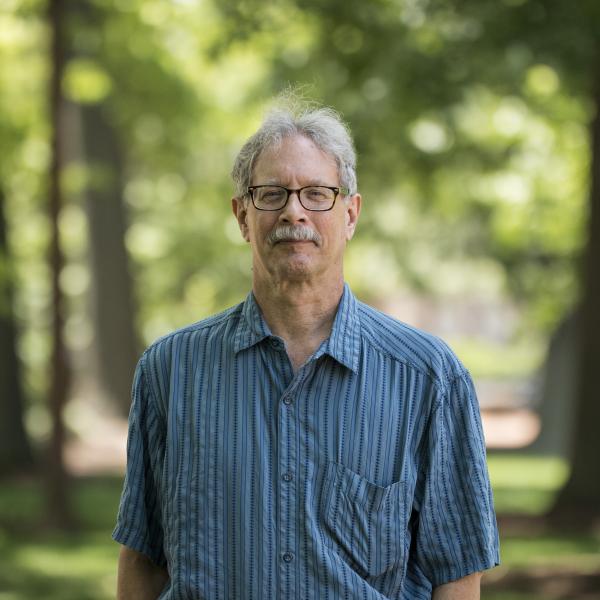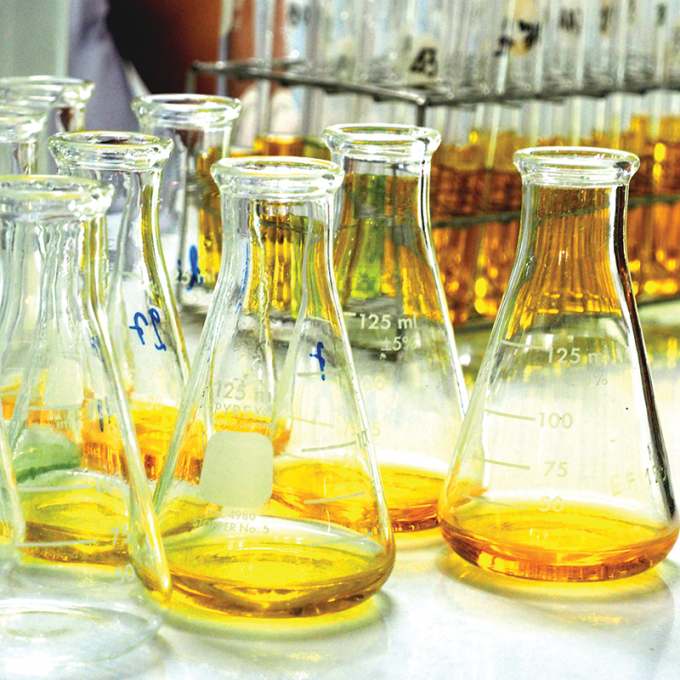Selected Publications
Switching Sides - Re-Engineered Primary Charge Separation in the Bacterial Photosynthetic Reaction Center, P. D. Laible, D. K. Hanson, J C. Burhmaster, G. A. Tira, K. M. Faries, D. Holten, and C. Kirmaier, Proc. Nat Acad. Sci. U.S.A. 2020, 117, 865-871.
Photophysical Properties and Electronic Structure of Zinc(II) Porphyrins Bearing Zero to Four meso-Phenyl Substituents – Zinc Porphine to Zinc Tetraphenylporphyrin (ZnTPP), N. C. M. Magdaong, M. Taniguchi, J. R. Diers, D. M. Niedzwiedzki, C. Kirmaier, J. S. Lindsey, D. F. Bocian, and D. Holten, J. Phys. Chem. A. 2020, 124, 7777-7794.
Comprehensive Review of Photophysical Parameters (e, Ff, ts) of Tetraphenylporphyrin (H2TPP) and Zinc Tetraphenylporphyrin (ZnTPP) – Critical Benchmark Molecules in Photochemistry and Photosynthesis, M. Taniguchi, J. S. Lindsey, D. F. Bocian, and D. Holten, Journal of Photochemisty & Photobiochemistry C: Photochemistry Reviews 2021, 46, 100401.
The Fluorescence Quantum Yield Parameter in Förster Resonance Energy Transfer (FRET) – Meaning, Misperception, and Molecular Design, J. S. Lindsey, M. Taniguchi, D. F. Bocian, and D. Holten, Chem. Phys. Rev. 2021, 2, 011302.
In Situ, Protein-Mediated Generation of a Photochemically Active Chlorophyll Analog in a Mutant Bacterial Photosynthetic Reaction Center, N. C. M. Magdaong, J. C. Buhrmaster, K. M. Faries, H. Liu, G. A. Tira, J. S. Lindsey, D. K. Hanson, D. Holten, P. D. Laible, and C. Kirmaier, Biochemistry 2021, 60, 1260-1275.
A Perspective on the Redox Properties of Tetrapyrrole Macrocycles, J. R. Diers, C. Kirmaier, M. Taniguchi, J. S. Lindsey, D. F. Bocian, and D. Holten, Phys. Chem. Chem. Phys. 2021, 23, 19130-19140.
Photosynthetic Reaction Center Variants Made Via Genetic Code Expansion Indicate Tyrosine at M210 Tunes the Mechanism for Primary Electron Transfer, J. B. Weaver, C-Y. Lin, K. M. Faries, I. Mathews, S. Russi, D. Holten, C. Kirmaier, and Steven G. Boxer, Proceedings of the National Academy of Science U.S.A. 2021, 118, e211643911.
Beyond Green with Synthetic Chlorophylls – Connecting Structural Features with Spectral Properties, M. Taniguchi, D. F. Bocian, D. Holten and J. S. Lindsey, Journal of Photochemistry and Biology C. Photochemistry Reviews 2022, 52, 100513-100592.
Probing the Effects of Electronic-Vibrational Resonance on the Rate of Excited-State Energy Transfer in Bacteriochlorin Dyads, N. C. M. Magdaong, H. Jing, J. R. Diers, C. Kirmaier, J. S. Lindsey, D. F. Bocian, and D. Holten, J. Phys. Chem. Lett. 2022, 13, 7906-7910.
High Yield of B-side Electron Transfer at 77 K in the Photosynthetic Reaction Center Protein from Rhodobacter sphaeroides, N.C. M. Magdaong, K. M. Faries, J. C. Buhrmaster, G. A. Tira, R. M. Wyllie, C. E. Kohout, D. K. Hanson, P. D. Laible, D. Holten, and C. Kirmaier, J. Phys. Chem. B 2022, 126, 8940-8956.
Balancing Panchromatic Absorption and Multistep Charge Separation in a Compact Molecular Architecture, A. Roy, N. C. M. Magdaong, H. Jing, J. Rong, J. R. Diers, H. S. Kang, D. M. Niedzwiedzki, M. Taniguchi, C. Kirmaier, J. S. Lindsey, D. F. Bocian, and D. Holten, J. Phys. Chem A 2022, 126, 9352-9365.
Dyads with Tunable Near-Infrared Donor-Acceptor Excited-State Energy Gaps: Molecular Design and Förster Analysis for Ultrafast Energy Transfer, H. Jing, N. C. M. Magdaong, J. R. Diers, C. Kirmaier, D. F. Bocian, D. Holten, and J. S. Lindsey, Phys. Chem. Chem. Phys. 2023, 25, 1827-1847.
Investigation of a Bacteriochlorin-Containing Pentad Array for Panchromatic Light-Harvesting and Charge Separation, H. Jing, N. C. M. Magdaong, J. R. Diers, C. Kirmaier, D. F. Bocian, D. Holten, and J. S. Lindsey, Phys. Chem. Chem. Phys. 2023, 25, 1781-1798.
Extension of Nature's NIR-I Chromophore into the NIR-II Region, K. Siwawannapong, J. R. Diers, N. C. M. Magdaong, P. Nalaoh, C. Kirmaier, J. S. Lindsey, D. Holten, and D. F. Bocian, Phys. Chem. Chem. Phys. 2024, 26, 14228-14243.
Two Pathways to Understanding Electron Transfer in Reaction Centers from Photosynthetic Bacteria: A Comparison of Rhodobacter sphaeroides and Rhodobacter capsulatus Mutants, K. M. Faries, D. K. Hanson, J. C. Buhrmaster, S. Hippleheuser, G. A. Tira, R. M. Wyllie, C. E. Kohout, N. M. Magdaong, D. Holten, P. D. Laible, and C. Kirmaier, Biochim. Biophys. Acta 2024, 1865, 149047


